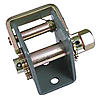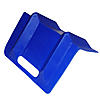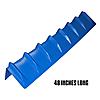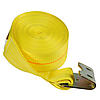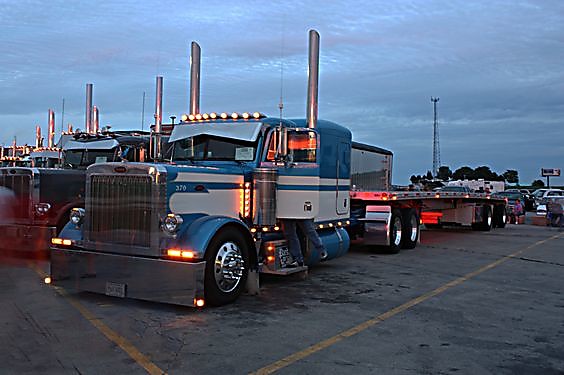
What is Flatbed Trucking?
Flatbed Trucking is widely known in the professional cargo transporting industry as trailers without any walls or roofs on the trailer and is open to the elements. Flatbed trailers can face elements such as rain, snow, ice, strong winds, extreme cold, and extreme heat. Flatbed Trailers are designed as strong frame rails that are welded together and designed for a strong wooden or metal floor to carry some of the heaviest and oversized loads on the road.
Some of the different types of cargo that flatbed trailers are often hauling include anything from metal coils, construction materials, farm equipment, military supplies, heavy hauling, tires, mobile homes, machinery, and industrial supplies to name a few. Flatbed trailers are 53 feet long and 102 inches wide meaning that the combinations for different cargo on the flatbed trailer are just about endless. You can also learn more about Flatbed Trucking in our blog post over The Complete Beginners Guide on Flatbed Trucking HERE.

The Benefits of Flatbed Trucking
• Flatbed Drivers are often loading and unloading cargo during the day which often prevents you from being stuck throughout the entire night waiting to be loaded or unloaded which dry van drivers often face. This results in less wait time for both loading and unloading cargo.
• Flatbed Drivers are often paid more than their dry van counterparts with an average yearly pay of $61,065 according to Zippia. This results in a higher pay per mile of transporting cargo than dry van drivers.
• Flatbed Drivers often drive fewer miles per day than dry vans and are almost always home at night as they are limited to being loaded and unloaded during daylight.
• You’ll often hear from Flatbed drivers about how much nicer the staff are at locations you are delivering to compared to dry vans that are loading and unloading for long periods of time.
• There is a higher demand for Flatbed Truck Drivers in the United States as there are approximately only 1,134,668 flatbed truck drivers currently employed in the United States. Compared to over 1,700,000 dry vans and over 415,000 reefer truck drivers in the United States as of 2022. According to Zippia’s Flatbed Truck Driver and Demographic Statistics. This means you’ll often always have work to do if you are willing to tackle the challenge.
• Flatbed drivers often experience extreme load variety throughout their work year and can almost always expect to never transport the same load from day to day.

The Downsides of Flatbed Trucking
• Flatbed Truck Drivers are often held to a higher standard by the Department of Transport (DOT) due to the fact there are no walls protecting the cargo if a tie-down strap or chain were to fail. This often results in failed straps or chains not being caught soon enough could cause a potential threat to the cargo coming off the trailer.
Flatbed drivers often have to re-check the load securement often and ensure that if a part of the cargo securement were to fail during transit the load would remain safe on the trailer.
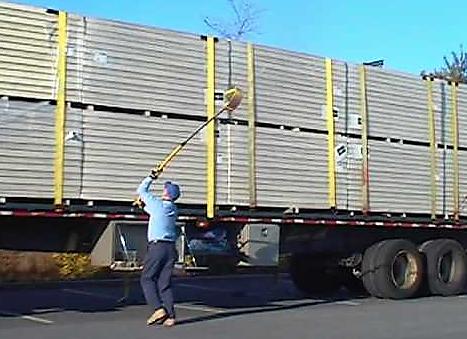
• As noted above it often takes around double the time to load and unload cargo in order to ensure the cargo arrives at the next stop in the same quality that it left in. This may be a downside at times if you are in weather conditions that are not ideal such as thunderstorms, snow storms, extreme heat, or extremely cold temperatures.
• Flatbed Trailers are often much dirtier than dry vans as they have no barrier between the cargo and the airflow from the roadways which often results in a lot of dust and road grime. This will often make you change clothes often so it’s important to always bring extra pairs of clothes to prepare for any situation that you are faced with.
• Flatbeds often have a much harder challenge at maneuvering and backing into locations as the cargo is often oversized in both height, width, and sometimes even weight. In dry vans, you can normally expect the same experience from load to load as the walls of the trailers never change and the blind spots are often the same. This normally causes flatbed drivers to need to get out of the truck and inspect where they are backing into often and is considered normal without the use of a spotter.
• Oversized loads come with a dangerous risk if not loaded, secured, or unloaded properly and you will always have to be on high alert and keep safety as the highest priority. This comes at a toll for extra added stress and anxiety at times.

Is Flatbed Trucking Worth It?
Flatbed Trucking can be an extremely worthwhile career for those who like to take on challenges, be flexible, and consider safety from start to finish. Flatbed Trucking’s average pay per year is just over $61,000 dollars per year in the United States for those with over two years of experience.
The yearly pay can jump upwards greatly for those willing to take the risk of becoming an owner-operator and those who are willing to put in more hours throughout the year as some Flatbed Company drivers are seeing upwards of six figures annually. This comes at a risk of very high maintenance and upfront costs so this may not be the ideal solution for everyone.
A few things to consider before becoming a flatbed truck driver or switching careers would be to further research the flatbed trucking market around your location. If there is a high demand for flatbed drivers and the pay per mile pay is what you are looking for it may be a great option instead of traditional dry van operators. You can see our full breakdown of the differences between flatbed truck driving vs dry van’s in our blog post HERE.


